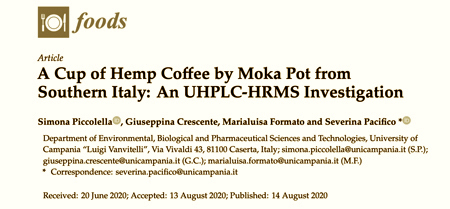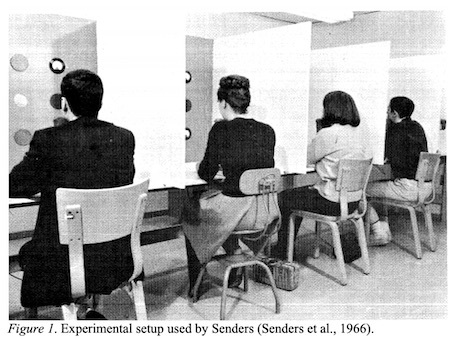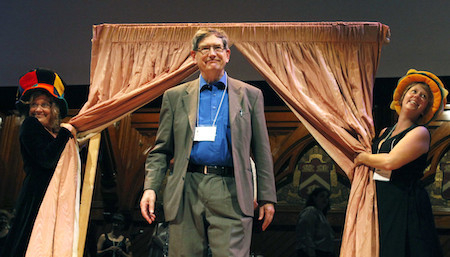Marc Abrahams's Blog, page 106
August 26, 2020
Study: A Cup of Hemp Coffee by Moka Pot
As coffee crops are threatened, year after year, by disease, insects, and economic forces, industry turns its eyes to possible alternatives, one of which is hemp. A new study, in Italy, assesses some of the potential of pot coffee brewed in a pot.
The study is: “A Cup of Hemp Coffee by Moka Pot from Southern Italy: An UHPLC-HRMS Investigation,” Simona Piccolella, Giuseppina Crescente, Marialuisa Formato, Severina Pacifico, Foods. vol. 9, no. 8, August 14, 2020, E1123.
The authors, at the University of Campania “Luigi Vanvitelli”, Italy, report:
“After a long period defined by prohibition of hemp production, this crop has been recently re-evaluated in various industrial sectors…. The objects of the present work are coffee blends enriched with shredded inflorescences of different cultivars of industrial hemp that underwent solid/liquid extraction into the Italian “moka” coffee maker. The obtained coffee drinks were analyzed by Ultra-High-Performance Liquid Chromatography-High Resolution Mass Spectrometry (UHPLC-HRMS) tools for their quali-quantitative phytocannabinoid profiles…. Neither Δ9-tetrahydrocannabinol (THC) nor cannabinol, its main oxidation product, were detected. The percentage of total THC never exceeded 0.04%, corresponding to 0.4 mg/kg, far below the current maximum limits imposed by the Italian Ministry of Health. This study opens up a new concrete possibility to exploit hemp processing by-products in order to obtain drinks with high added value…”
HAVE PDF < https://www.mdpi.com/2304-8158/9/8/11... USED IN BLOG 2020 08

“Volkswagen… Everyone Laughed”– an Ig Nobel Prize favorite moment
This historic Ig Nobel Favorite Moment video stars David Kessler, who stage managed and produced many Ig Nobel Prize ceremonies.
The Ig Nobel Prizes honor achievements that make people LAUGH, then THINK.
The 30th First Annual Ig Nobel Prize Ceremony will be webcast September 17, 2020 at www.improbable.com.
Coordinator, Narrator, & Typist: Seth Gliksman

August 25, 2020
How to Spill a Cup of Coffee
“How to Spill a Cup of Coffee” is a featured article in the special Coffee, and Tea issue (volume 26, number 4) of the Annals of Improbable Research. It looks at two studies—each of which led to an Ig Nobel Prize—about the physics of how and why anyone who walks with a full cup of coffee in hand is likely to spill some.
Read the article free, online. If you like it, make yourself a cup of coffee, spill a little for luck, and then maybe subscribe to the magazine.

“Bug Splats, Flamingos, Tornados!”– an Ig Nobel prize favorite moment
This historic Ig Nobel Favorite Moment video stars Meryl Klein, whose then-fiancé, now husband, Mark Hostetler was awarded an Ig Nobel Prize in entomology, for his book, “That Gunk on Your Car,” which identifies the insect splats that appear on automobile windows.
The Ig Nobel Prizes honor achievements that make people LAUGH, then THINK.
The 30th First Annual Ig Nobel Prize Ceremony will be webcast September 17, 2020 at www.improbable.com.
Coordinator, Narrator, & Typist: Seth Gliksman

August 24, 2020
Holes around holes of little or no benefit in golf putting [new study]
The Ebbinghaus illusion (a.k.a. Titchener circles) is a robust optical illusion discovered more than 100 years ago. Two identically-sized* circles are presented, one is surrounded by large circles, the other by small circles. The one surrounded by small circles looks bigger.
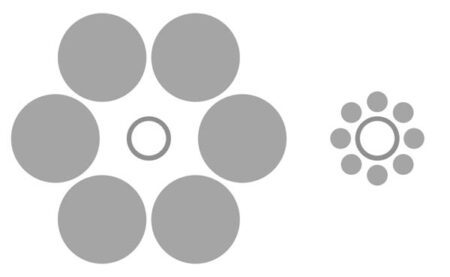
In 2012, a research group from Purdue University, the Max Planck Institute and the University of Virginia wondered if the illusion might have practical applications – say, for sportspersons. They reasoned that :
“Bigger targets feel as if they should be easier to hit, so people may feel more confident when aiming for a bigger target.”
Leading to the question of whether golfers might find putting easier if the Ebbinghaus illusion was employed to make the hole look bigger? Their experiments supported their hypothesis :
“Participants putted more successfully to the perceptually bigger hole. As outlined in the introduction, this result suggests a link between perceived size and performance.”
See: Witt, J. K., Linkenauger, S. A., & Proffitt, D. R. (2012). Get me out of this slump! Visual illusions improve sports performance. Psychological Science, 23, 397-399. (full copy here)
⁂
Their findings have, however, recently been questioned. This time, a team from Université de Franche-Comté and Université Paris-Est Créteil performed three Ebbinghaus-assisted putting experiments, and in general found very little, if any, advantage.
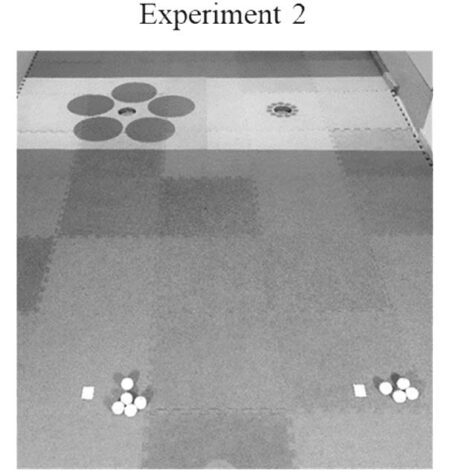
“One practical implication of the present study is that sportsmen, coaches and teachers should not rush to embrace training techniques that rely on the Ebbinghaus illusion to improve sports performance in novices, unless they are prepared to accept little or no benefit.”
See : Maquestiaux, F., Arexis, M., Chauvel, G. et al. Ebbinghaus visual illusion: no robust influence on novice golf-putting performance. Psychological Research, 2020. (full copy here)
* Note : Yes, we’ve checked, they are.
Research research by Martin Gardiner.

August 23, 2020
A new appreciation of a look at some dials
John Senders, 2011 Ig Nobel Prize winner (for his 1960’s experiment in which he drove an automobile on a on a major highway while a visor repeatedly flapped down over his face, blinding him) gets some new attention for his doctoral thesis, which is not as well known as as the driving experiment.
The new paper about Senders’s old work is: “A Short Introduction to John Senders’s Models of Visual Sampling Behavior,” Yke Bauke Eisma, Peter A Hancock, and Joost de Winter, [preprint] March 2020. The authors explain:
“In this thesis, Senders described experiments in which he asked participants to view a bank of dials with randomly moving pointers. This experimental configuration was inspired by the paper ‘Eye movements of aircraft pilots during instrument-landing approaches‘ by Fitts, Jones, and Milton (1950).”
A look back at a man who was repeatedly not able to look
Here’s video of John Senders’s famous driving-on-a-major highway experiment:

August 21, 2020
“A Man Painted in Gold”– an Ig Nobel Prize favorite moment
This historic Ig Nobel Favorite Moment video stars Mark Hostetler, who was awarded an Ig Nobel Prize in entomology, for his book, “That Gunk on Your Car,” which identifies the insect splats that appear on automobile windows.
The Ig Nobel Prizes honor achievements that make people LAUGH, then THINK.
The 30th First Annual Ig Nobel Prize Ceremony will be webcast September 17, 2020 at www.improbable.com.
Coordinator, Narrator, & Typist: Seth Gliksman

What the hell is he doing? Sighing, that’s what.
“Teigen has seen deep traces in both the history of psychology and especially in fields such as intuition and social cognition, ie how we experience, perceive and think in social situations. Yet it is the ironic Ig Nobel Prize that has made him most famous, at least for those who are not in the profession.”
Ig Nobel Prize winner Karl Teigen, of the University of Oslo, is one five scholars thus profiled—about their current activities—in the newspaper Khronos, under the headline “What the hell are you doing, really?”
This photo shows Teigen emerging through the sacred curtains at the Ig Nobel Prize ceremony in 2011, at the moment he was introduced as a winner.
He was awarded the Ig Nobel Prize for psychology, for trying to understand why, in everyday life, people sigh.
That research is documented in the study “Is a Sigh ‘Just a Sigh’? Sighs as Emotional Signals and Responses to a Difficult Task,” Karl Halvor Teigen, Scandinavian Journal of Psychology, vol. 49, no. 1, 2008, pp. 49–57.

August 20, 2020
“We Couldn’t Find Our Miss Sweetie Poo”– an Ig Nobel Prize favorite moment
This historic Ig Nobel Favorite Moment video stars Kayoko Teramoto, who helped organize the Ig Nobel Museum Exhibition in Tokyo. (Miss Sweetie Poo, whom she mentions, is the 8-year-old child who enforces time limits at the Ig Nobel Prize ceremony).
The Ig Nobel Prizes honor achievements that make people LAUGH, then THINK.
And for the same thing, but this time in Japanese:
The 30th First Annual Ig Nobel Prize Ceremony will be webcast September 17, 2020 at www.improbable.com.
Coordinator, Narrator, & Typist: Seth Gliksman

August 19, 2020
“You’re Just Too Good to Be True”– an Ig Nobel Prize Favorite moment
This historic Ig Nobel Favorite Moment video stars Peaco Todd, who was a minordomo in many Ig Nobel Prize ceremonies.
The Ig Nobel Prizes honor achievements that make people LAUGH, then THINK.
The 30th First Annual Ig Nobel Prize Ceremony will be webcast September 17, 2020 at www.improbable.com.
Coordinator, Narrator, & Typist: Seth Gliksman

Marc Abrahams's Blog
- Marc Abrahams's profile
- 14 followers


